Ahead of U.S. President Donald Trump’s meeting with Russian President Vladimir Putin in Alaska on Friday, 59% of Americans say they are not confident that Trump can make wise decisions about the Russia-Ukraine war. Four-in-ten express confidence in him on this issue, according to a new Pew Research Center survey.
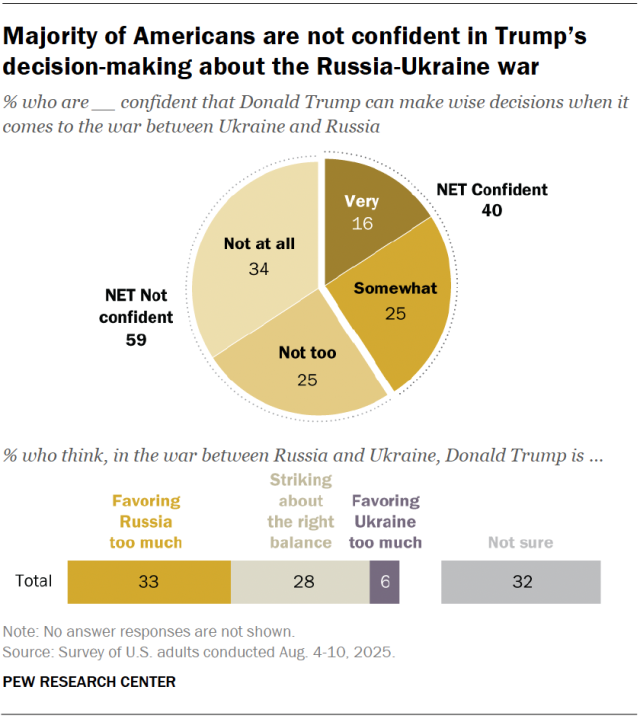
The public also remains more likely to say Trump is favoring Russia too much (33%) than to say he is favoring Ukraine too much (6%). About three-in-ten (28%) say he is striking about the right balance. An additional 32% aren’t sure.
The survey, conducted Aug. 4-10 among 3,554 U.S. adults, also asked Americans other questions related to the war, including:
- Is the U.S. providing too much, too little or the right amount of support to Ukraine?
- Does the U.S. have a responsibility to help Ukraine defend itself?
- Is Russia’s invasion a threat to U.S. interests?
Is the U.S. providing too much or too little support to Ukraine?
Overall, 29% of Americans say the U.S. is not providing enough support to Ukraine, while 18% say it is providing too much.
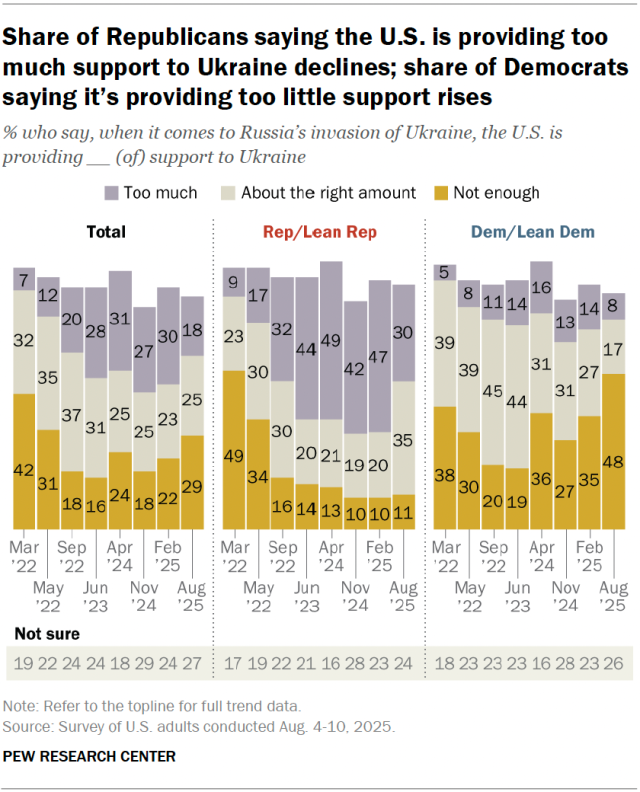
Democrats remain far more likely than Republicans to say the U.S. is not providing enough support to Ukraine. But there has been some movement in recent months among both groups.
Compared with the beginning of Trump’s term, a much smaller share of Republicans and Republican leaners now say the U.S. is providing too much support to Ukraine (47% in February vs. 30% now). The share saying U.S. support is about right has risen 15 percentage points over this period.
Among Democrats and Democratic leaners, 48% say the U.S. is not providing enough support to Ukraine, up from 35% at the beginning of Trump’s term. The shares of Democrats saying the U.S. provides too much support or about the right amount of support have declined over this period.
Does the U.S. have a responsibility to help Ukraine?
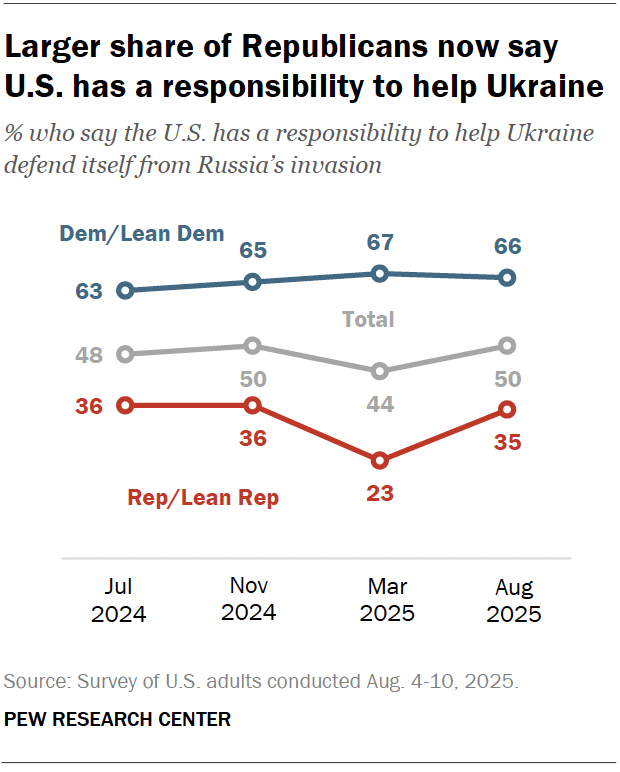
As has been the case for the past year, Americans are divided over whether the United States has a responsibility to help Ukraine defend itself from Russia’s invasion. Today, 50% say it does, while 47% say it does not.
Since March, the share of Republicans who say the U.S. has this responsibility has risen 12 points (23% then vs. 35% today) and is now on par with views in 2024. Two-thirds of Democrats say the U.S. has this responsibility, essentially unchanged over the past year.
Is Russia’s invasion a threat to U.S. interests?
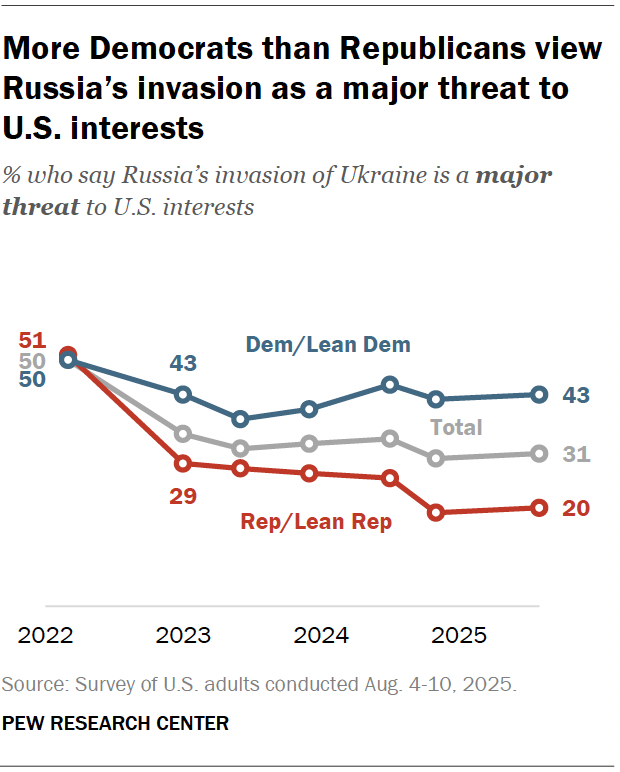
About three-in-ten Americans (31%) say Russia’s invasion of Ukraine is a major threat to U.S. interests. The same share (31%) call it a minor threat, while 11% say it is not a threat. Roughly a quarter (27%) say they are not sure whether the invasion threatens U.S. interests.
The share saying Russia’s invasion is a major threat has remained relatively stable over the past several years – but is lower than when the war began in 2022.
Democrats continue to be much more likely than Republicans to view Russia’s invasion as a major threat to U.S. interests (43% vs. 20%).
How do partisans view Trump’s treatment of Ukraine and Russia?
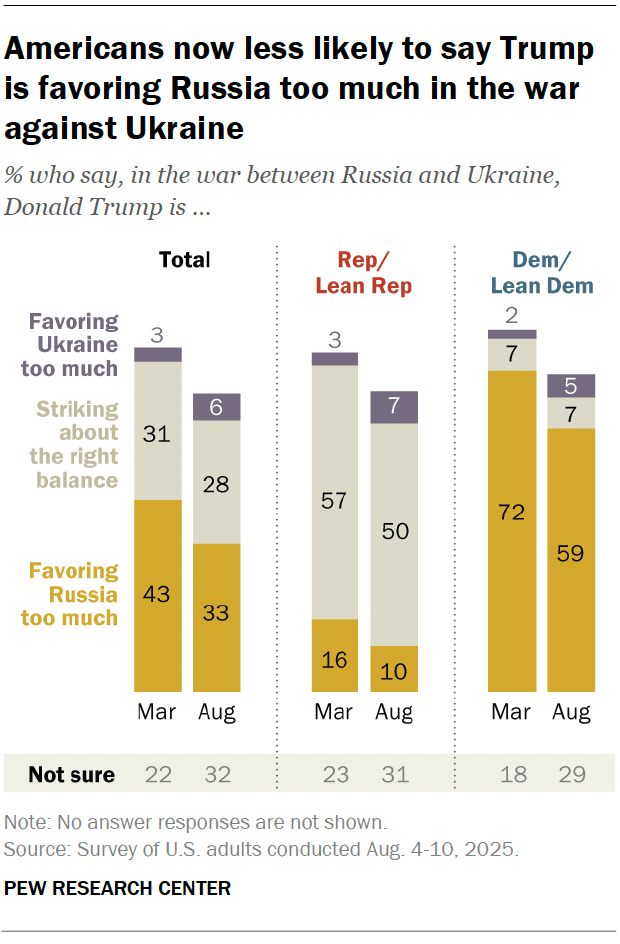
Today, 33% of Americans say Trump is favoring Russia too much – down 10 points since March. The shares who say he is striking about the right balance (28%) or favoring Ukraine too much (6%) haven’t changed much over this period.
At the same time, there has been a 10-point rise in the share of those who are not sure about Trump’s approach (22% then vs. 32% today).
A smaller share of Republicans now say Trump is favoring Russia too much compared with earlier this year (10% now vs. 16% then). Today, half of Republicans today say Trump is striking about the right balance, while 7% say he is favoring Ukraine too much. About a third (31%) are not sure – up from 23% in March.
Most Democrats continue to say Trump is favoring Russia too much, but the share holding this view has declined since March (from 72% to 59%). More Democrats say they are not sure now than in March.
How confident are partisans in Trump’s decision-making about the war?
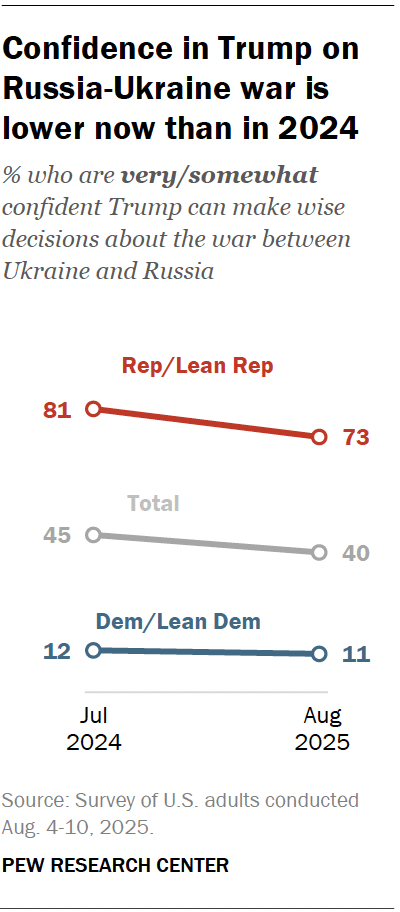
The share of Americans who have confidence in Trump to make wise decisions about the war is lower today than it was in July 2024, during the presidential campaign. Today, 40% say they are at least somewhat confident in Trump, down from 45% a year ago.
This shift has come mostly among Republicans. Last summer, 81% said they have confidence in Trump’s decision-making on the war. Today, that share is 73%. Among Democrats, 12% held this view last summer and 11% do so today.
Note: Here are the questions used for this analysis, the topline and the survey methodology.
